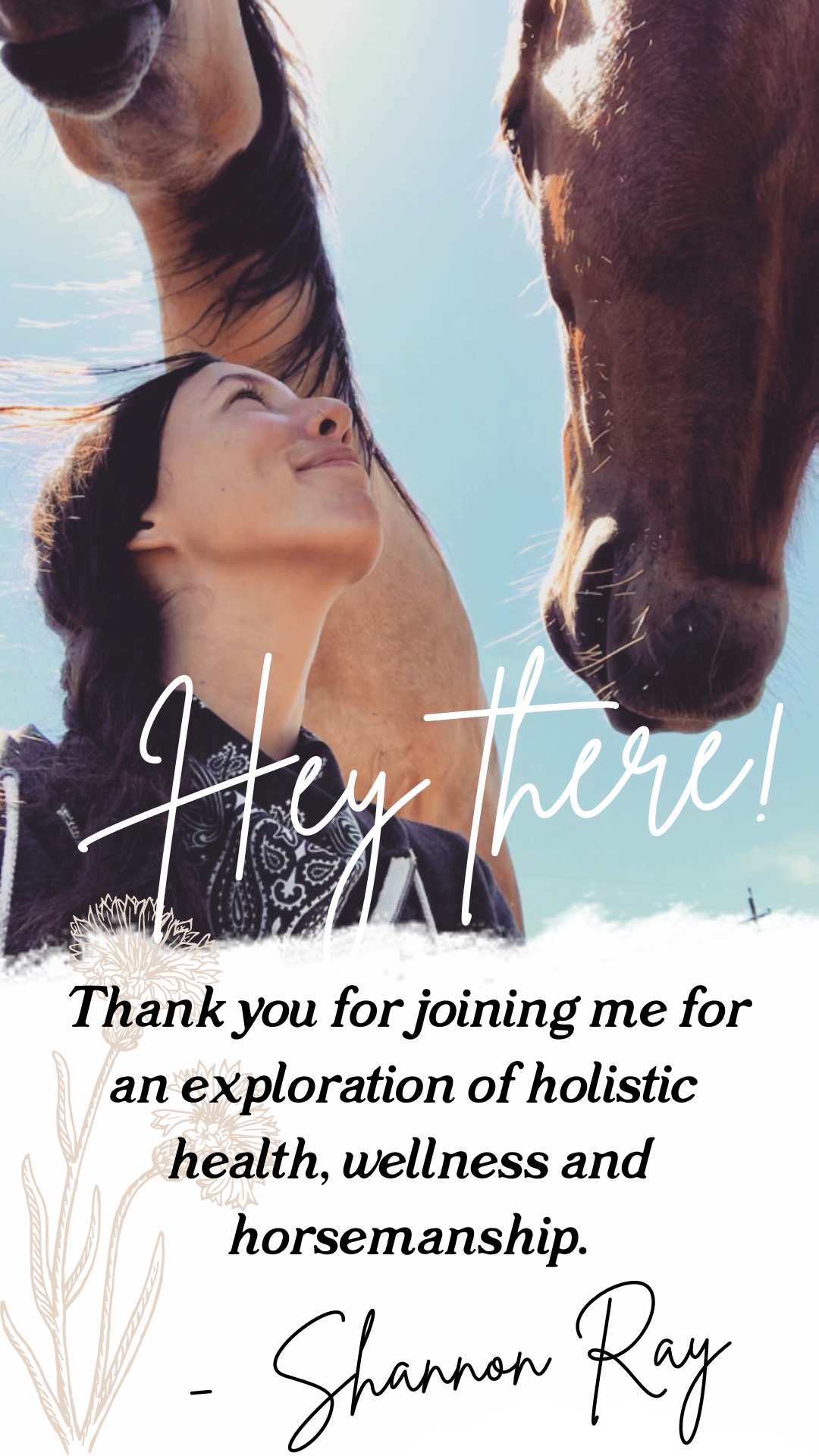The Beginner's Guide to Home and Stable Herbalism
There are thousands upon thousands of plants with medicinal constituents, ranging from those that are gentle and nutritive to those that are toxic in large (and even small) amounts. As a beginner, it can be dizzying to know where to begin as you take your first steps down the plant path.
There are also many plant paths to choose from. For instance, paths for those who wish to become clinical herbalists, to researchers, medicine makers, or home herbalists.
In this post, I share my most essential piece of advice for budding herbalists just getting started on the plant path. And at the end, I’ll share my go-to resources that will grow with you from beginner to advanced herbalist, as you work herbal remedies into every aspect of your life. Herd Members have access to my extended, unfiltered list of resources, so if you aren’t already a member, sign up here to get full access!
This guide will concentrate on what the late prominent western herbalist Michael Moore calls Green Herbalism. Moore has tons of free educational articles on his website, the Southwest School of Botanical Medicine, which if you are a true herb nerd such as myself, you will find a seemingly endless amount of information to grow into. However, seeing as you’re green at this (wow, an herb and horse pun) just save Moore’s materials for another day. You’ll thank me later.
For now, you want simple and easy, so I’d suggest instead you check out The Herbal Academy (which merges herbal medicine for dummies, with more advanced courses for hungry herbalists).
Moore writes in his article, ‘Herbal Tinctures in Clinical Practice, 3.0’, that a Green Herbalist is:
…one that doesn't trust ANY herb unless it can be personally gathered at least once… [Thus] my recommendations are heavily biased towards North American Herbs. This does not mean that the BEST herbs grow in North America… it means that Michael Moore lives in North America, that's the shit he knows, and he hates to talk about stuff he DOESN'T know.
So there you have it. My first piece of advice for you beginning your journey on the plant path is to focus on the GREENERY that surrounds you, from the soles of your feet to the tip of your crown.
Get to Know Your Roots
Not just the literal plant roots, rhizomes, or taproots. But rather first off, the plants growing in the place where you’re rooted. This can be the home where you were raised or the region you transplanted yourself into. In whatever place you call home, that’s where your plant studies ought to start.
I, like Moore, live in North America. And what’s more, I was born and raised in a small, hippie town in Northern California called Sebastopol, where an abundance of clinical herbalists, herb lovers, and herb growers can be found. My theory is that it’s something in the soil, or perhaps in the air. Visit and you may find out for yourself. This area gives off a strictly unconventional vibe (which may be summarized poignantly by the names of our local newspaper, ‘The Bohemian’, and the rural county highway 12, known as bohemian highway). The acclaimed herb school California School of Herbal Studies is rooted in my small communities backyard, in a neighboring town called Forestville. Moreover, Rosemary Gladstar, the well-known herbalist, author, educator, co-founder of the botanical sanctuary Sage Mountain Herbs, and founder of United Plant Savers, an invaluable resource and plant conservation organization, also was raised in Sebastopol, CA. So yeah, I’m not only proud to be born and raised in my herb-loving hometown, but it’s no wonder that plant medicine called to me so strongly.
As budding or seasoned herbalists, I believe it’s essential to acknowledge our own roots. Which plants do you already know, unconsciously or intuitively, because they’ve been growing right outside your front door your whole life?
As you bring herbal medicine into your home and stable, the greatest advise I can offer you is to start with the plants you already know. The plants that grow around you.
There’s a saying in herbalism that the medicine you need is under your feet. And equally, the medicine our horses need is under their hooves.
And odds are, if a gentle nutritive herb is growing in the region where your horse lives, your horse would graze it if they had access to it.
Sadly though, many non-native grasses that grow in abundance in pastures make it dangerous to give horses unlimited access to pasture. Thus, in practicing stable herbalism, we must bring the herbs to our horses.
What herbs can we offer to our horses? You may be wondering as I was at the start. While certainly, there are plenty of herbs I could point you to in textbooks which offer great benefits to humans and horses, I’d rather tell you to find a plant that not only offers great medicine but grows in your area.
The reason green herbalism is vital to sustainability and our deeper understanding of plants is twofold:
First off, we are well aware how much horses weigh. So just imagine how much more the dosage of an herbal remedy for a horse is than for a human. That said, it is not only ethical for us as plant stewards to grow and buy local, but also much more cost effective for our wallets.
Second, my telling you to learn plants only in textbooks and buy herbs grown on the other side of the planet would be akin to advising you to learn how to handle horses at a facility that’s hours away from you. You would still get the knowledge and build a relationship, but it wouldn’t be nearly as effective as if you had a horse right in your backyard who you could communicate with each and every day.
Susun Weed, another legendary herbalist and author, notoriously has her herbal apprentices choose one plant growing on her farm to work with and learn, but without any outside references or educational materials. Rather, her apprentices must sit with the plant each day and let its properties come to them from the plant itself.
I’ve heard incredible stories of what Weed’s apprentices have learned through this technique. It is the same relational technique humans have honed with Mother Nature for thousands of years. It is the reason indigenous cultures know ways of working with plants that our most advanced science has yet to prove.
When you truly listen to plants, just like I advise you to do with horses, they share their wisdom with you.
I’ve shared my TOP TEN go-to herbal books and resources with you below (the full resource list is available to Herd Members), but truly, the most important piece of advice I can give you as you start your journey working with herbal medicine is to listen to the plants. Daily. Consistently. Curiously, and with an open heart and mind.
Go deep with just a handful of herbs, rather than forcing yourself to learn tables and lists of the uses of a hundred herbs. Because another beautiful thing about herbs that I’ve found is that each herb works many wonders. In fact, I don’t believe there is a single herb on the planet that only has one singular use.
Herbs are complex, relational beings that work best when they’re in relationship with you. Be a steward for their care, in reciprocity for calling on them to share their medicine with you. That is the kind of herbalism we need more of in the world. Rather than a ‘use this herb for that symptom.’
So now, in case you were wondering and without further ado, here are my most tried and true herbal resources for beginners that helped me grow on the plant path, and learn how to bring herbal medicine into my self care and horse care.
Note that this posts contains affiliate links, and as an Amazon Associate I earn from qualifying purchases.
#1
The Herbal Handbook for Farm and Stable by Juliette de Bairacli Levy
Ah, Juliette, the grandmother of modern veterinary herbalism. Where do I even begin to express my admiration for this inspiring woman who was friend to plants and animals alike? I suppose that first off, the reason this book is my #1 recommendation is given that the first edition was published in 1952, and it is now in its fourth edition, and still as relevant and poignant as ever.
Nearly ever page of this book in my library is either tattered, scribbled on with notes, or highlighted with stars and underlining from my frequent consults of ‘what Juliette would do’.
Do yourself a favor and order it now, and then read the following passage (1991: p. 2-3) which will make you very glad you did:
A gypsy horse-trader, Jack Vincent, said wisely, when discussing horse medicine with me, that he never had to ‘medicine’ his animals, because they took their own cures from the hedgerows where he grazed them daily, in different parts of the countryside. And his son, Jim Vincent, also highly knowledgeable concerning horses, spoke to me in scorn of the general pastureland grazed by the present-day dairy herds, when we were walking over some typical closely grazed fields, almost without any herbs in their entire acreage, planted apparently with only one type of quick-growing grass. He said simply that he would never be able to induce any horse of his to stay in such places; that his horses were used to the good foods of nature and would leap out of any fields where they could not get hedgerow herbs and an abundance of ‘weeds’ and also hedge croppings.
#2
The Herbal Medicine Maker’s Handbook: A Home Manual by James Green
Worth. It’s. Weight. In. Gold. This book is an absolute essential for every herbalist who wants to make any kind of herbal medicine. Which is to say, this is essential for every herbalist. Medicine making is at least half the fun in herbalism. Experimenting is as much a part of the plant path as college social life. You don’t have to make every herbal recipe under the sun to become an herbalist, but you will likely find yourself being called in one direction or another - balms, poultices, tinctures, creams, and liniments, oh my.
To truly get to know the actions and medicinal constituents of herbs, you need to walk the walk, shake the jar, and toss the marc (you’ll get what I mean when you read the book, promise).
What I also love about this book is that it will grow with you from the beginning days to your advanced, upper-level season. Green is so good at speaking to the intangible, magical realm of herbalism just as much as the nitty gritty science. Get your copy here.











